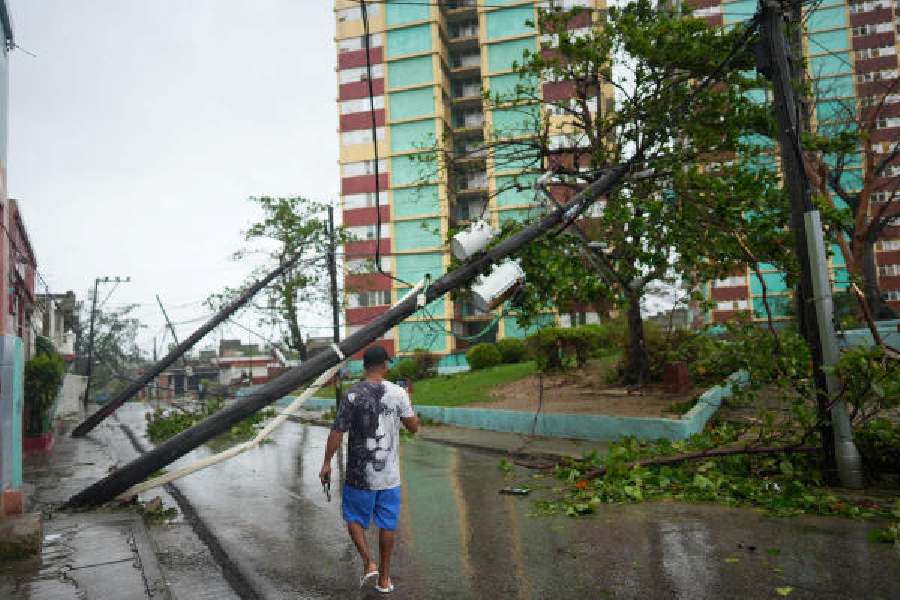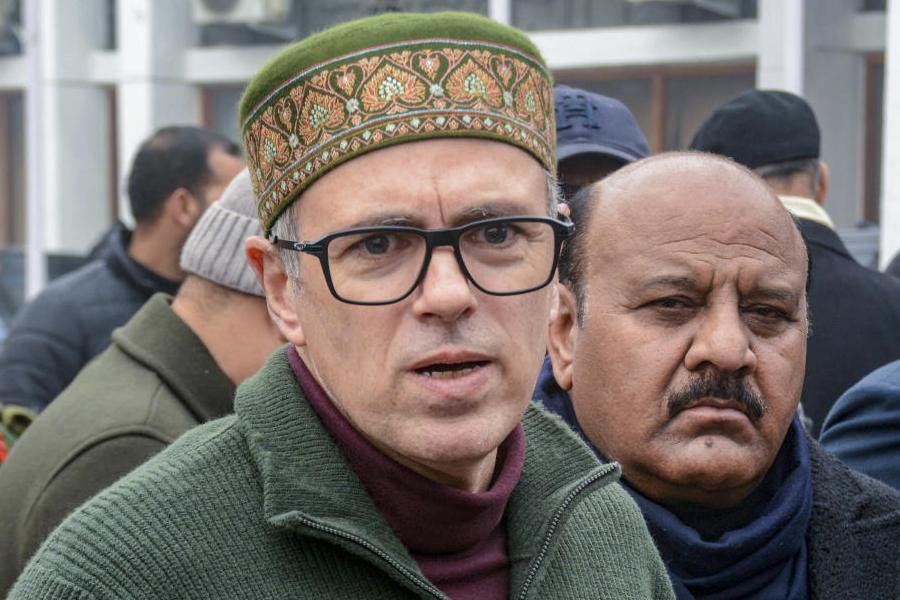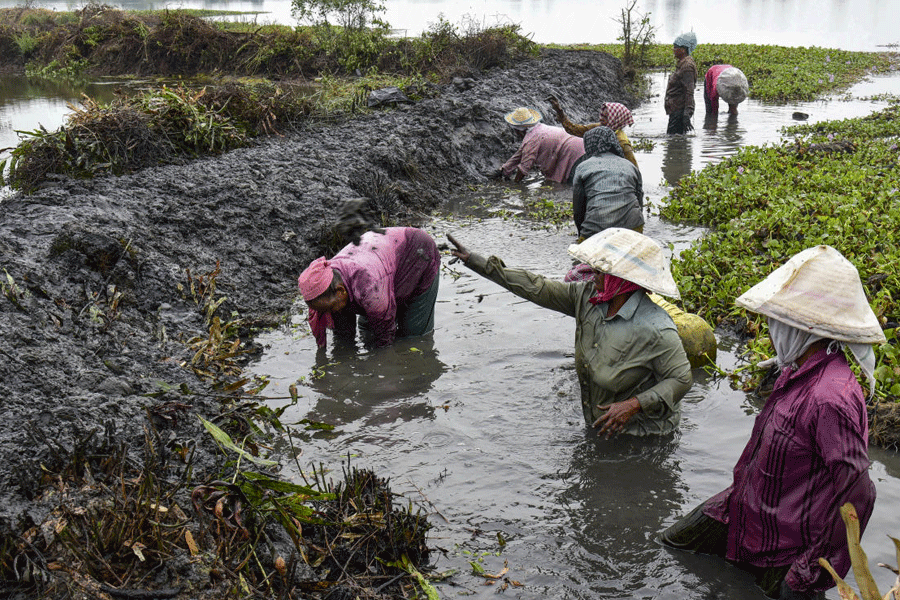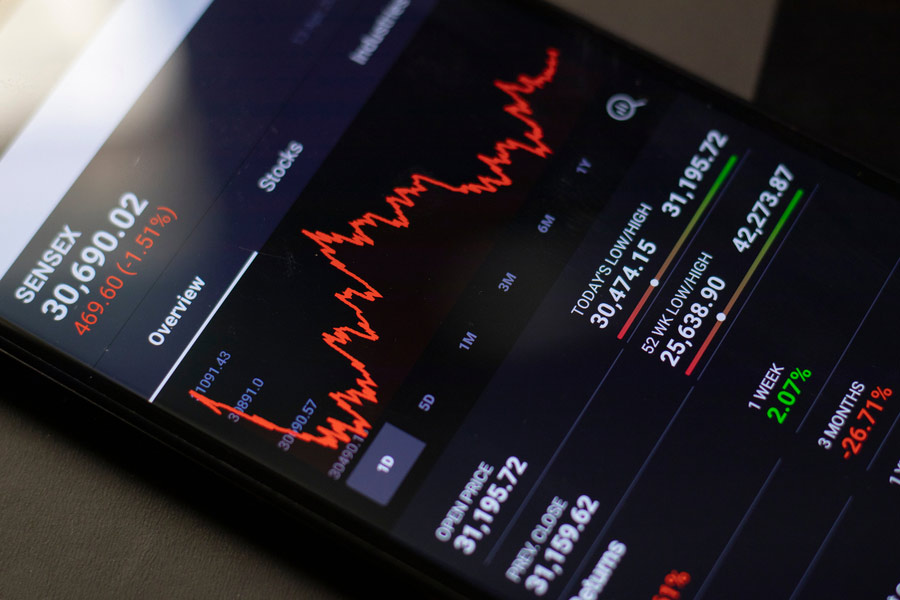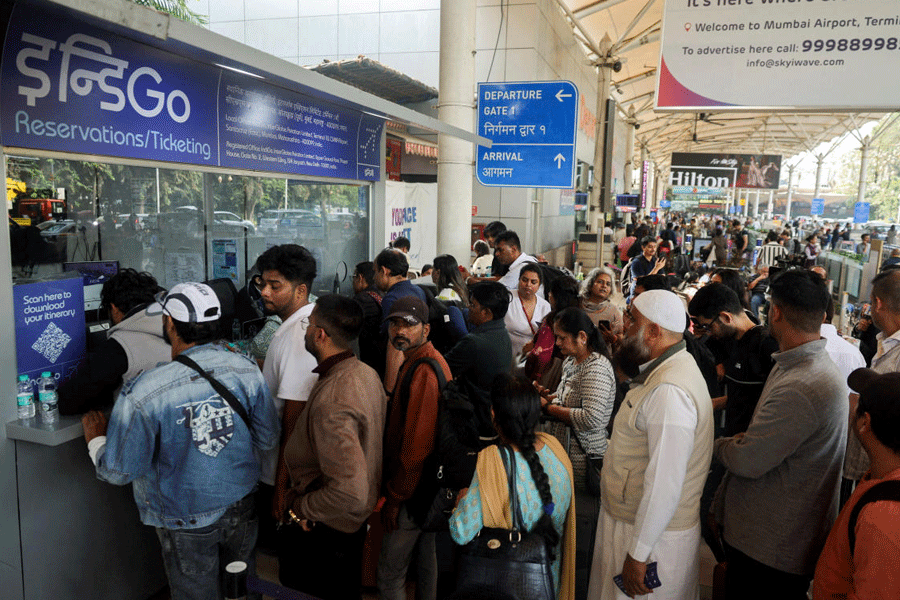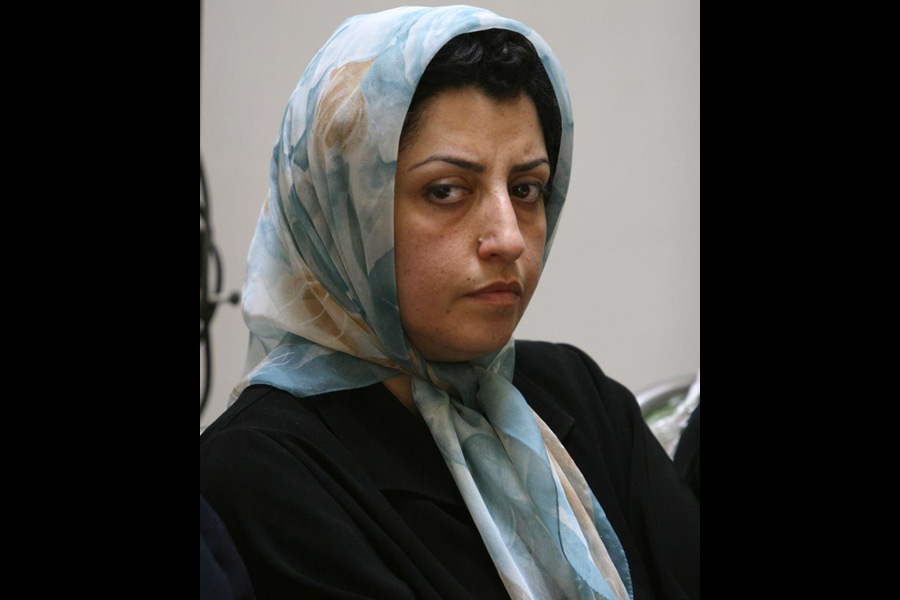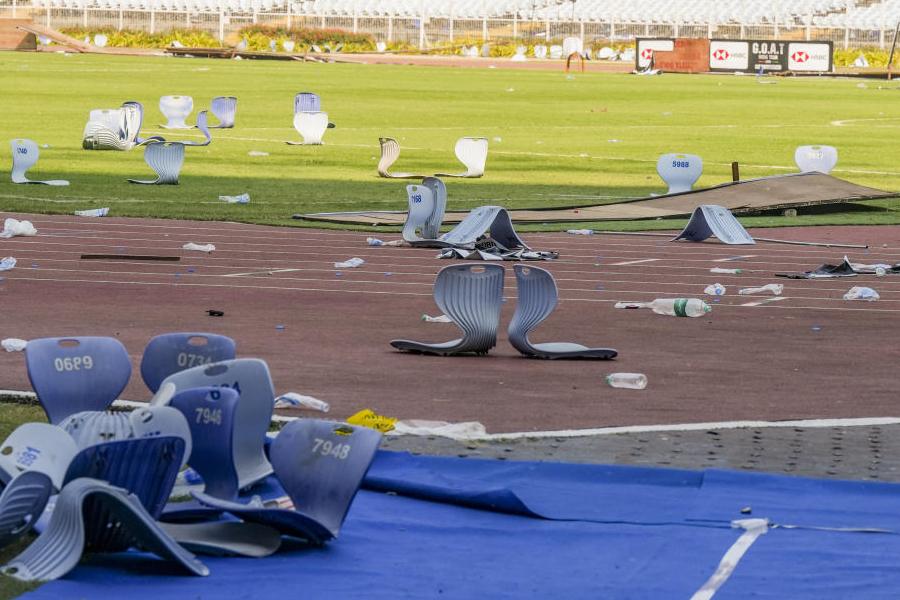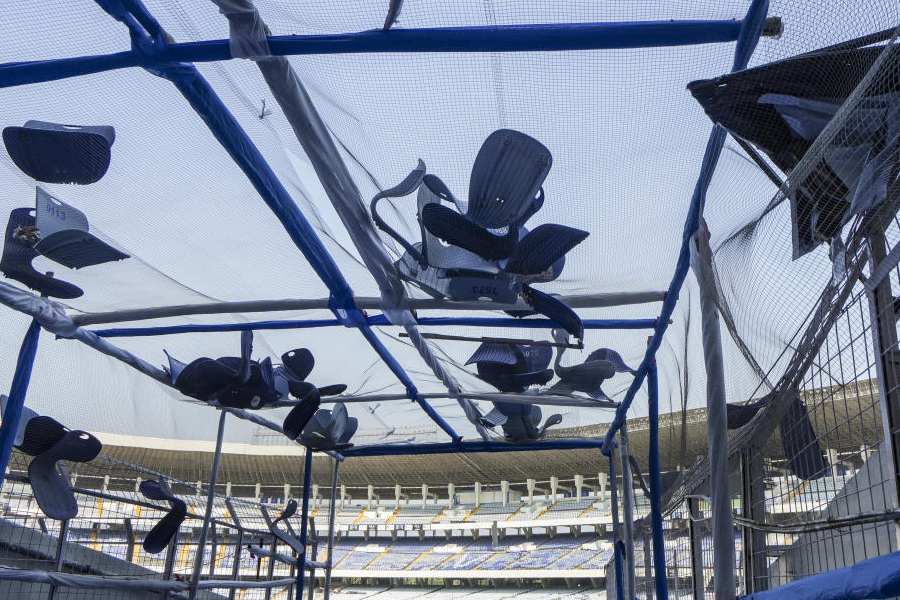Hurricane Melissa brought life-threatening storm surge and flooding to Cuba on Wednesday after leaving a swath of destruction in Jamaica, where power and internet outages were making it difficult to assess the scale of the damage.
The storm weakened somewhat before making landfall in Cuba, and is now a Category 2 storm, the National Hurricane Centre said on Wednesday morning. Melissa remained potent and dangerous, though: Parts of eastern Cuba were set to receive more than 20 inches of rain and dangerous flooding, and the southeastern Bahamas were expected to receive up to 25cm of rainfall as the storm advanced.
The broad hurricane was also bringing the risk of “catastrophic flash flooding and landslides” to Haiti and the Dominican Republic, the National Hurricane Center said, and it was expected to cause a dangerous storm surge in the Bahamas and Turks and Caicos on Wednesday.
Melissa hit Jamaica on Tuesday as one of the strongest Category 5 storms on record, at one stage packing 185mph winds. The authorities in Jamaica said on Tuesday that they had received initial reports of devastating damage to infrastructure wrought by Melissa, which disabled communications, electricity and one of the country’s major airports, making it difficult for the authorities to get immediate, reliable assessments of the damage.
“As of right now, the reports that are coming in are catastrophic,” Daryl Vaz, Jamaica’s energy and transport minister, said in an interview with Sky News. “Not very much survives a Category 5 hurricane, in terms of infrastructure.” The eastern parts of the island, including the capital, Kingston, were mostly undamaged, Vaz said.
At one stage on Tuesday, more than half a million people were without power in Jamaica, officials said. And by Tuesday night, internet connectivity in Jamaica had dropped to 30 per cent of normal levels, according to NetBlocks, which monitors outages.
Desmond McKenzie, a Jamaican minister who has been coordinating the emergency response, said the government “was not in a position to speak about any deaths because we have not had any reports of deaths so far”.
He added that three babies were born during the storm. “Despite our challenges, we rise to the occasion,” he said.
Dana Morris Dixon, Jamaica’s information minister, said the government had directed utility crews to begin restoring power and telecommunication services across the island after the storm knocked out power to 70 per cent of the country. “I know so many people have said they cannot reach their families in western Jamaica. That’s because of damage to the telecoms infrastructure,” Morris Dixon said, noting that the western part of the country was hardest hit.
Melissa is bringing life-threatening storm surge, flash flooding and landslides to eastern Cuba, the National Hurricane Centre said. Haiti and the Dominican Republic are facing “catastrophic flash flooding and landslides,” with Haiti most likely seeing “extensive damage and isolation of communities”. At least 25 people have died in Haiti.
Hundreds of thousands of people were evacuated in eastern Cuba and a hurricane warning was in effect for the provinces of Granma, Santiago de Cuba, Guantanamo, Holguin and Las Tunas as Hurricane Melissa made landfall as a Category 3 storm early Wednesday. Cuban authorities said some 735,000 people remain in shelters after being evacuated from their homes in the east.
The US will deploy disaster response teams to
Caribbean countries impacted by Melissa, the state department announced on Wednesday. The department also said in a social media post that it had “activated” Urban Search and Rescue teams based in the US.

